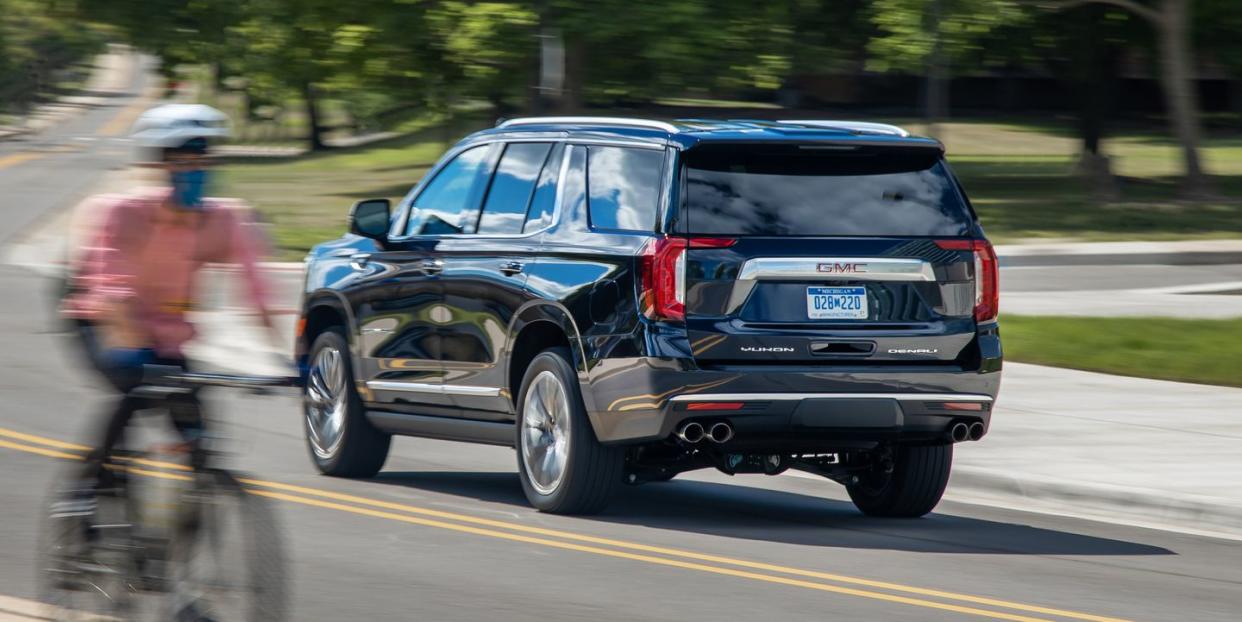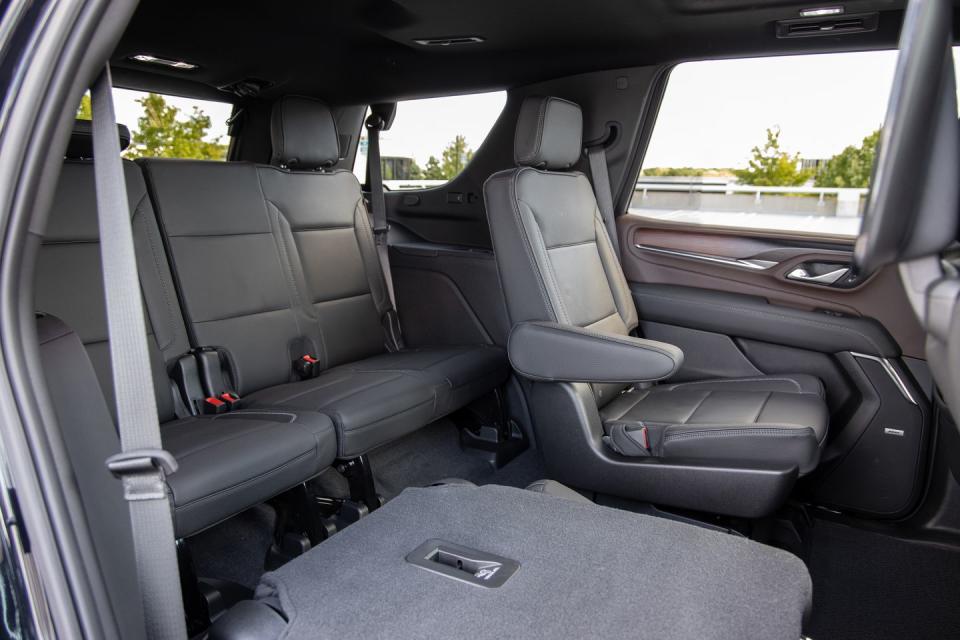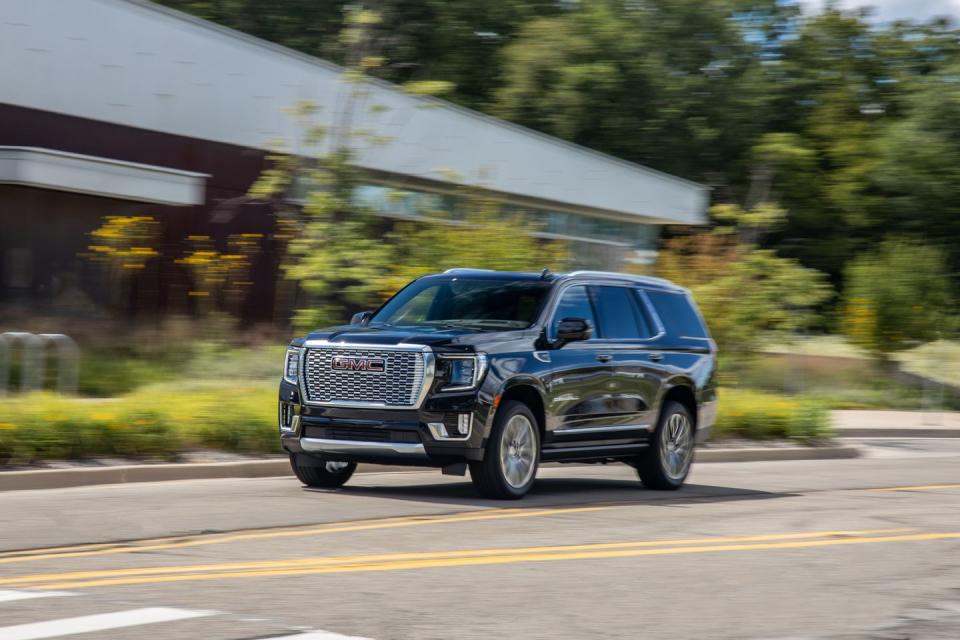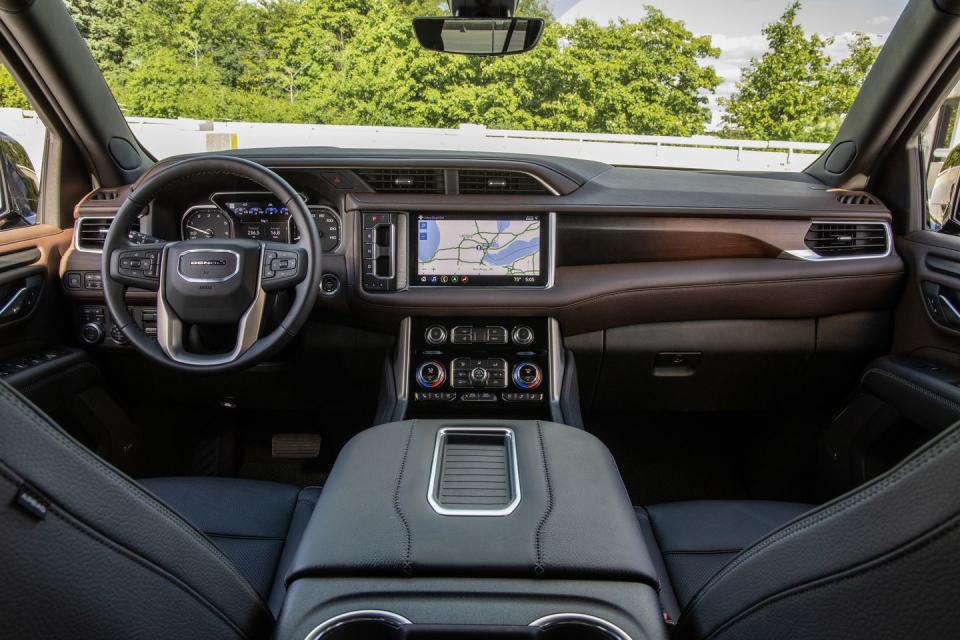Tested: 2021 GMC Yukon Denali Adds Refinement and Practicality

In General Motors's lineup of large SUVs, the GMC Yukon lives in the small bit of ground between the Cadillac Escalade and Chevrolet Tahoe. Like those trucks, the Yukon has been thoroughly redone for 2021. The new platform is still body-on-frame construction, but GM has finally bolted in an independent rear suspension to replace the old live-axle setup. That new suspension pays dividends in ride and handling and allows for a lower floor, which increases third-row space and cargo capacity.
The Yukon now has 11 cubic feet more cargo space than in the previous generation and 10.1 extra inches of third-row legroom. The wayback of the new Yukon still looks cramped, but dropping the floor makes the third row far more comfortable, and it's possible to imagine that an adult would voluntarily spend up to an hour back there without complaint, especially if the second-row seats are scooted forward.

Ride and handling improvements born of the new suspension are subtler. The new Yukon steers, handles, and rides with more grace than before. But the front and rear suspension still clap annoyingly over impacts. The Yukon is easier to wield and responses are tighter, but we did note its obnoxiously low cornering grip—less than before—just matching the last Sierra HD pickup that we tested at 0.73 g.
Not everything about the Yukon is new, but not everything needed to change either. Unlike the Ford Expedition, which only comes with a twin-turbo 3.5-liter V-6, GMC continues to offer naturally aspirated V-8 engines. A 355-hp 5.3-liter V-8 is standard, and the upmarket Denali comes with a 420-hp 6.2-liter V-8. Both receive the advanced cylinder-deactivation system introduced by the 2019 Chevrolet Silverado. With the 6.2-liter V-8, our Denali hit 60 mph in 6.0 seconds, two-tenths of a second behind its predecessor. We saw 14 mpg during our time with the new Denali, which is in keeping with the EPA's city fuel-economy estimate for a Yukon with this wheelbase and powertrain.

As much as we love the V-8s, judged by how it well it works in the Sierra pickup, we might be tempted by the new turbocharged 277-hp 3.0-liter inline-six diesel engine with 460 pound-feet of torque. GMC hasn't released fuel-economy estimates for the diesel, but based on the Sierra's numbers with that engine we'd expect it will score roughly 23 mpg city and as high as 30 mpg highway. All three engines share a 10-speed automatic transmission and available with rear- or four-wheel drive.
If you're more into off-roading than drag racing, there's the new AT4 trim, which adds off-road tires, skid plates, standard magnetorheological dampers, red front-tow hooks, and a variety of other cosmetic enhancements. When GMC began planning an AT4 trim for the Yukon, it expected the model to account for about 10 percent of sales, but the success of the Sierra and Acadia AT4 bumped expectations to about 20 percent.

A new interior helps the Yukon satisfy its upscale pretensions, and Denalis go a step further with special leather, real wood trim, and a number of exclusive interior-color options. There's an available 15-inch head-up display and optional tablet-style infotainment displays for the second row that can display media from a variety of bring-your-own video sources and—this may turn out to be a mistake—send navigation suggestions to the driver for approval.
More practical and luxurious than before, the Yukon is a subtle choice compared to the overt ostentatiousness of the Cadillac Escalade and Lincoln Navigator. Buyers would be smart to consider Mercedes's GLS-class full-sizer, but the Yukon's design strikes us the sweet spot in GM's lineup of large SUVs.
You Might Also Like

 Yahoo News
Yahoo News 
